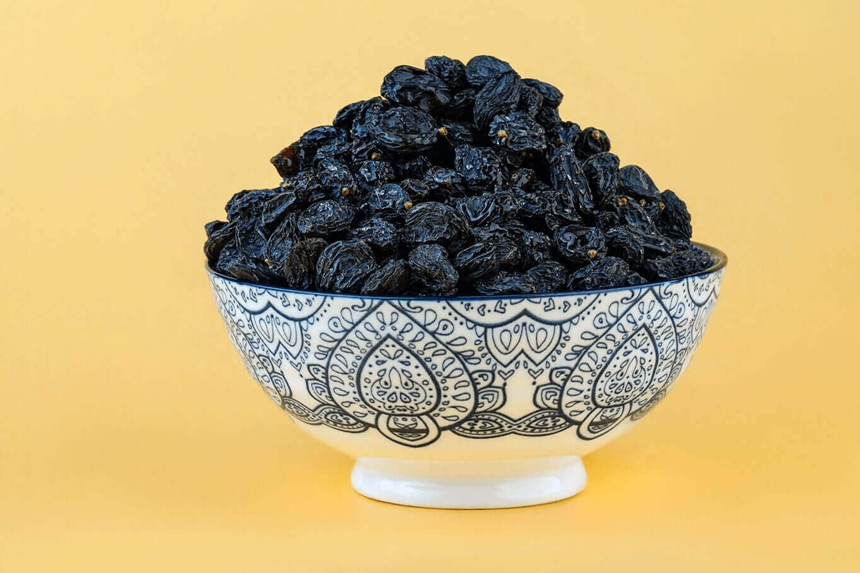Vegetables (Cauliflower, Spinach, Mushrooms)

Cauliflower, spinach, and mushrooms present diverse nutritional benefits. Cauliflower, offering vitamins C and K, contains around 20 milligrams of purines per 100 grams. Spinach, rich in iron and vitamins A and K, contains approximately 20 milligrams of purines per 100 grams. Mushrooms, a good source of selenium and vitamin D, contain around 10 milligrams of purines per 100 grams.
While these vegetables contribute significantly to a balanced diet, individuals managing uric acid levels should monitor their intake of cauliflower, spinach, and mushrooms to maintain a balanced purine intake and reduce potential risks.
Raisins

Raisins, with heightened concentrations of B vitamins, potassium, and iron, offer substantial nutritional value. However, their elevated purine content, approximately 100 milligrams per 100 grams, might necessitate moderation for individuals concerned about uric acid levels or managing gout symptoms.
Despite their nutritional benefits, those wary of purine-rich foods should moderate their consumption of raisins to prevent potential adverse effects associated with increased uric acid levels.
Conclusion

For the broader populace, the presence of these high-purine foods in our diets doesn’t imply complete avoidance. Instead, it underscores the significance of mindful consumption. These foods offer valuable nutrients essential for a balanced diet. Moderation becomes the key; enjoying them occasionally or in controlled portions can still fit within a healthy diet. Choosing alternatives or adjusting intake based on individual needs and health considerations can help maintain a diverse and nutritious diet without compromising health goals.
However, for individuals predisposed to conditions like hyperuricemia or gout, a cautious approach towards high-purine foods is warranted. Consulting healthcare professionals or nutritionists can aid in crafting personalized dietary strategies. They can suggest suitable substitutes or recommend portion control to manage uric acid levels effectively. Adhering to an individualized diet plan tailored to specific health needs ensures the enjoyment of a diverse array of foods while mitigating the potential risks associated with elevated purine intake.
In essence, while these high-purine foods can be part of a balanced diet for most individuals, a personalized approach is essential for those at risk, allowing them to navigate dietary choices wisely and promote overall health and well-being.





